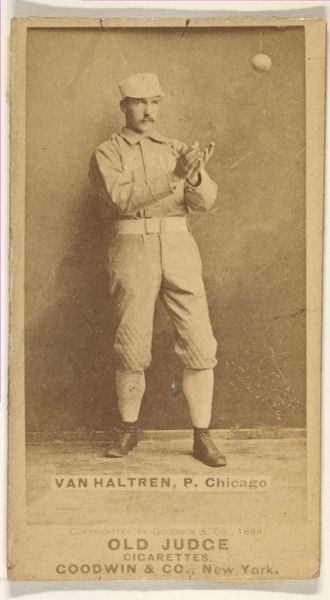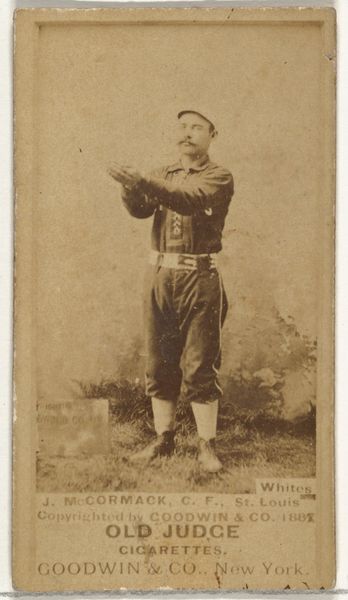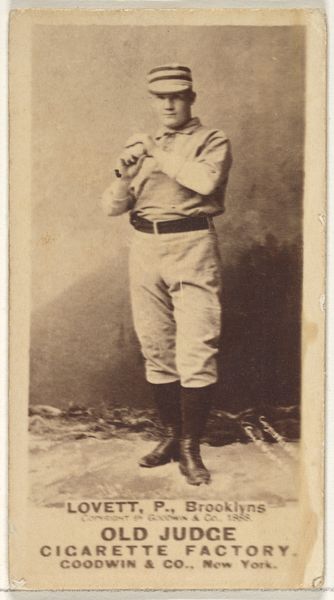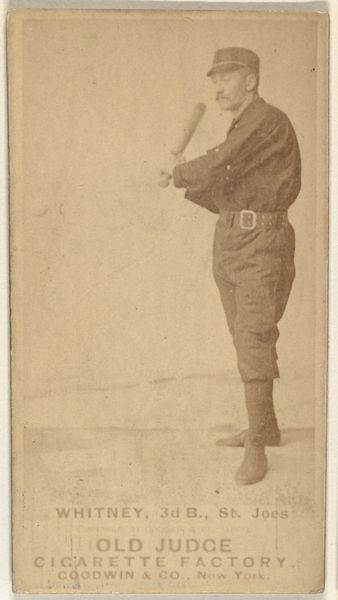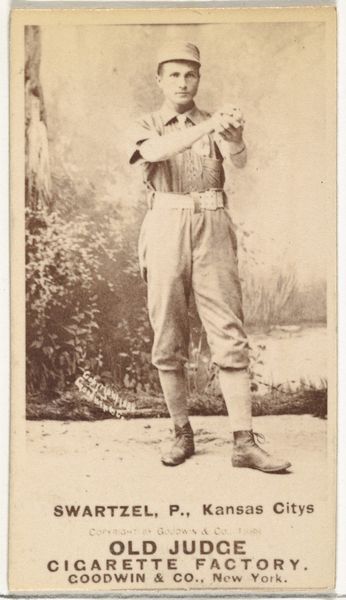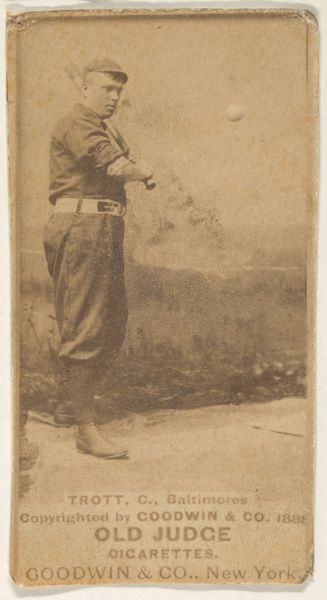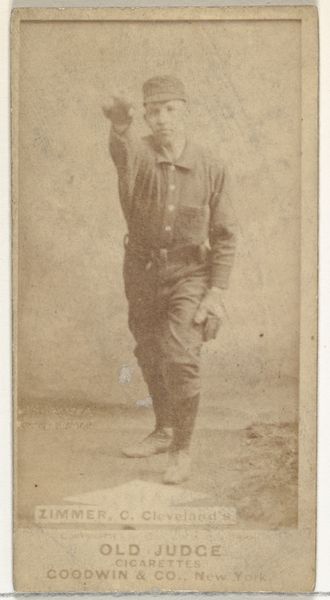
Henry "Harry" Eli Staley, Pitcher, Pittsburgh, from the Old Judge series (N172) for Old Judge Cigarettes 1888
0:00
0:00
print, photography, gelatin-silver-print
#
portrait
# print
#
old engraving style
#
baseball
#
photography
#
gelatin-silver-print
#
19th century
#
men
#
athlete
Dimensions: sheet: 2 11/16 x 1 3/8 in. (6.9 x 3.5 cm)
Copyright: Public Domain
Editor: So, this is a baseball card featuring Henry "Harry" Eli Staley, a pitcher for Pittsburgh, made in 1888. It's a gelatin silver print, part of the "Old Judge" series for Old Judge Cigarettes. It has a certain faded, sepia tone, a real sense of history clinging to it. What strikes you about it? Curator: I'm drawn to the materiality of the piece itself. Think about its original function – a promotional item tucked into a cigarette pack. This was mass-produced ephemera, destined to be collected, traded, or discarded. But now it's in the Met, valued for its cultural significance. It's fascinating how a piece of commercial waste transforms into art. Editor: Absolutely, I hadn't thought about it that way. So, the very means of its production, the association with the Old Judge cigarette brand, it’s all significant? Curator: Precisely. Consider the labor involved. The tobacco farming, the factory workers rolling cigarettes, the photographers and printers creating these cards on a massive scale – all these processes and labor are embedded within this little card. It reflects the industrialization and consumer culture of the late 19th century. What does Staley’s pose, the idealized depiction of the athlete, communicate within that social context? Editor: I guess it presents him as a commodity as much as the cigarettes. It's interesting how it highlights both individual talent and the forces of industry that commodify everything. Curator: Exactly. And let's not forget the consumption aspect. This card encouraged smoking, linking athleticism with a harmful product. It reveals much about the values and contradictions of that era. It’s less about artistic genius and more about the system. Editor: I’m definitely seeing this image differently now, less as a portrait and more as a product of its time, intertwined with labor, commerce, and consumption. Curator: Indeed, analyzing art through its materiality opens up a dialogue about how economic forces and social relations shape what we consider art. It definitely highlights that an artistic artifact reflects society at large.
Comments
No comments
Be the first to comment and join the conversation on the ultimate creative platform.


